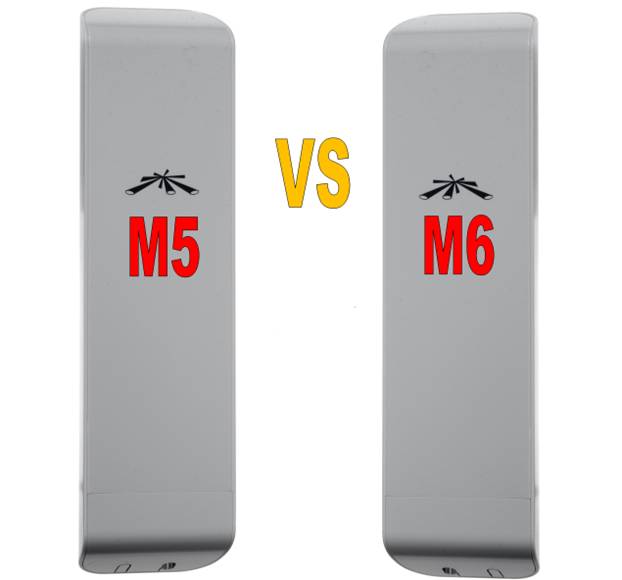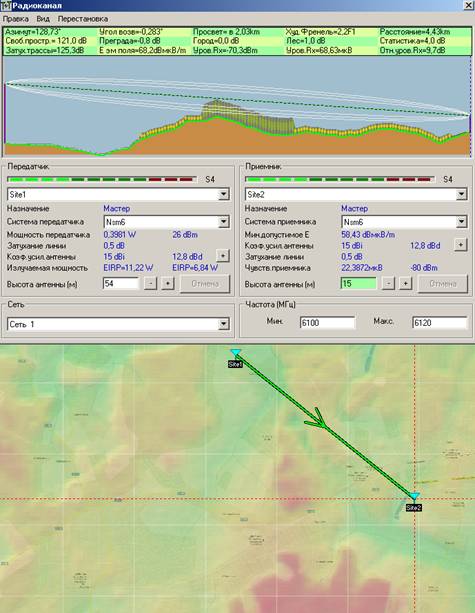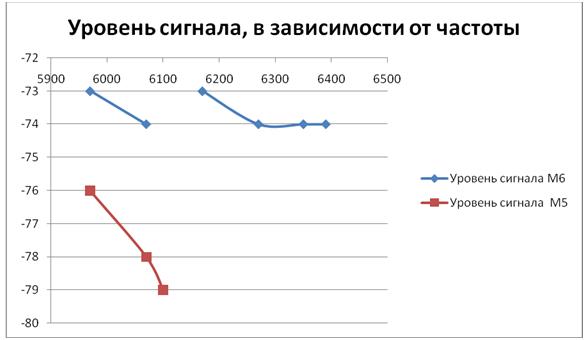Beyond 6 GHz or testing Ubiquiti Nanostation M6
Beyond 6 GHz or testing Ubiquiti Nanostation M6

Ubiquiti AirMAX equipment is well known to all readers of our blog.
Appearing in 2010, the AirMAX product line allowed us to get carrier quality services at an incredibly low price.
Unfortunately, the wide distribution of this equipment had its negative side: the frequency resource of the 2.4 and 5 GHz bands was exhausted in just two years.
In many regions, it is no longer possible to obtain a frequency assignment in classic frequencies, it is not uncommon when, after requesting frequencies in the 5 GHz band, the operator receives a refusal and a proposal to use frequencies of 6-6.4 GHz.
Thus, a paradoxical situation has developed: in the 5 GHz band, there is equipment available and interesting to the user, but there are no free radio frequencies.
In the range of 6-6.4 GHz, there are available frequencies, but the choice of equipment is extremely poor, and the cost of existing solutions is 5-10 more than the cost of Ubiquiti, which, in some cases, makes the construction of networks economically inexpedient.
Understanding the difficulties of our customers, we, as a master distributor , convinced Ubiquiti to develop, specifically for the Russian market, the M6 line, functionally identical to M5, but operating in the 6-6.4 GHz frequency band. Of course, the lineup of the new line is not as wide as the classic one, but the basic building blocks for building a network - Nanostation and Rocket are already being released.
Recently, we received the first batch of Nanostation M6 equipment and immediately went to check it on a practical radio channel. Since the devices have a completely redesigned radio part, we wanted to compare them with the usual Ubiquiti solutions, since their frequencies partially overlap.
As a partner sparring for the new model, its prototype was made - the well-known Nanostation M5.
')
So, the main parameters of the compared equipment:
| Nanostation M5 | Nanostation M6 | |
| MHz frequency range | 4870-6100 | 5970-6390 |
| Available MHz Frequency Bands | 3,5,8, 10, 20,25,30, 40 | 5, 10, 20, 40 |
| DBm output power | 28 | 28 |
| Built-in dB gain | 15 | sixteen |
We see that the basic parameters of the systems are almost the same, which makes it easy to move from the construction of 5 GHz networks to the new equipment.
The devices were tested on a 4.4 km long point-to-point radio channel with a significant overlap of the Fresnel zone. This channel is far from ideal, thanks to which we were chosen for tests, because in practical installations it is not always possible to provide full radio visibility, and the device’s performance in ideal conditions does not guarantee its operation in practical situations.

Calculation of the energy of the radio channel (for modulations of 16 Qam) and radio visibility.

In practice, we saw an even worse situation - the ends of the link were not even visible
We carried out the main testing in the most relevant frequency bands of 20 MHz. They also measured 10 and 40 MHz in order to verify the scalability of the solution.
So, the measurement results
Verification of system performance in the main frequency bands, the center frequency of 6170 MHz.
| Frequency band | 10 MHz | 20 MHz | 40 MHz |
| DBm signal level | -70 | -73 | -73 |
| CCQ / Quality / Capacity | 99 70 59 | 99 66 58 | 98 56 35 |
| Channel speed Mbit / s | 39/39 | 78/78 | 120/120 |
| Useful speed Mbit / s | 24.50 | 37.03 | 50.46 |
We have once again seen that in conditions of low energy and partial radio visibility, the use of wide frequency bands (especially wider than 20 MHz) does not lead to a significant increase in throughput.
Since there are often opinions in the network that the embedded test overestimates the bandwidth of the channel, we also checked the compliance of the indicators of the built-in traffic generator and the software traffic generator IPERF.
| Built-in test Mbit \ s | Iperf TCP Mbit \ s | Iperf TCP 3 Mbit \ s Stream | Iperf TCP 10 Mbit \ s Stream | |
| 20 MHz band | 37.03 | 15.8 | 25.3 | 33.4 |
We see that the embedded test is very close in results to the multi-threaded IPERF TCP testing.
Well, let's move on to the main tests:
Nanostation M6
| 5970 | 6070 | 6170 | 6270 | 6350 | 6390 | |
| DBm signal level | -73 | -74 | -73 | -74 | -74 | -74 |
| CCQ / Quality / Capacity | 95/62/47 | 96/58/42 | 99/66/58 | 98/57/43 | 96/47/30 | 93/49/34 |
| Channel speed Mbit / s | 78/78 | 78/78 | 78/78 | 78/78 | 78/78 | 78/78 |
| Useful speed Mbit / s | 45.3 | 41.25 | 37.03 | 32 | 31 | 29.90 |
Nanostation M5
| 5970 | 6070 | 6100 | |
| DBm signal level | -76 | -78 | -79 |
| CCQ / Quality / Capacity | 98/50/34 | 98/46/35 | 97/55/33 |
| Channel speed Mbit / s | 52/52 | 52/52 | 52/52 |
| Useful speed Mbit / s | 31.3 | 27.7 | 25.7 |

As you can see, the use of new models allows even in the upper frequencies of 59xx to get a significant gain in signal level (3 dBm), in the frequencies of 6000-6100 MHz, the difference can reach up to 5 dBm. However, the user, of course, is more important than the useful speed of the system:

And again, the M6 exceeds the capabilities of the M5, this time by 45-50% even at the frequencies available for the M5.
The range of devices 6-6.4 GHz and the proposed antenna to them.
At the moment, the main networks are being built: Nanostation M6 for subscribers and Rocket M6 for the base.
Ubiquiti does not produce antennas of the range of 6-6.4 GHz, but it is possible to use antennas of such well-known manufacturers as MARS Antennas , as well as less well-known, but more affordable vendors.
Here are some examples of antennas that can be used to build networks in the 6-6.4 GHz band with Rocket M6 equipment using RP-SMA-N-type cable assemblies:
| MA-WD62-DP16 | MA-WA62-DP24B | ANT 6300/90 / 16MIMO 6100/90 / 16MIMO | ANT 6300 / 24MIMO 6100 / 24MIMO | ASPD-6-31 | |
| DB gain | sixteen | 24 | sixteen | 24 | 31 |
| Degree Diagram | 90 by 8.5 | 8.5 by 8.5 | 90 to 9 | 9 to 9 | 3.5 to 3.5 |
| frequency range | 5700-6425 MHz | 5700-6425 MHz | 6200-6500 MHz 5900-6200 MHz | 6200-6500 MHz 5900-6200 MHz | 5900-6500 MHz |
findings
The new M6 line allows operators to enter the previously unavailable 6-6.4 GHz band with low-cost and reliable equipment.
In some regions, the use of the range of 6-6.4 GHz is the only option when deploying a new network or increasing the capacity of existing networks.
Even in the already available frequency range, the solutions of the M6 series are significantly more productive than classical models. Certificates of communication already exist. Nanostation M6 in stock, Rocket M6 will arrive in January.
Source: https://habr.com/ru/post/161381/
All Articles